When it comes to brainstorming, mind mapping (also known as clustering) is one of the best, most effective tools you can use. And the best news: mind maps are fun and easy to create. All you need are a few simple tools:
A single idea to start with
A piece of paper (landscape orientation)
A few multi-colored pens, pencils, crayons, or other fun writing utensils
Or, if you're more technically inclined, you can utilize the many free/trial mind mapping software apps available online (more on these below).
So join me in this post and complementary screencast presentation as I explore how to use mind mapping as a tool for brainstorming, writing, product creation, and more!
Now, on to the video…
Mind Mapping 101
For starters, the video I show in the Featured Resource section at the end of this post is a presentation that fellow author J.R. Biery (whom you can hear conversing with me in the video) asked me to do for our local writer's critiquing group. I was honored to show the attendees this amazing tool and how I've used it for everything from writing to creating several courses, even to website design.
Much of what I'm going to go over in this post is discussed in the video below, but I’d like to make it easier on you by listing here some of the invaluable links to the resource materials mentioned in the video.
That being said, don't skip the video just because some of the ideas are presented here; there is much more to learn in the video than I can duplicate in a single blog post.
To begin with, the self-proclaimed inventor of mind mapping is a guy by the name of Tony Buzan.
I say self-proclaimed because, according to Wikipedia...
Although the term 'mind map' was first popularized by British popular psychology author and television personality Tony Buzan, the use of diagrams that visually 'map' information using branching and radial maps traces back centuries.
Buzan recommends mind mapping with various colors and bold, flowing lines, sort of like a tree with branches. I myself usually just start with one color and straight lines; this is mainly so I can get the ideas down on a sheet of paper as fast as they come to me without having to worry about creating a work of art. That part comes later (hopefully in the form of a new product).
Examples of Mind Mapping
Here are some examples of such mind maps that could easily be considered works of art:
And a few of my own mind maps, some of which I've recently created via the use of my new Passion Planner:
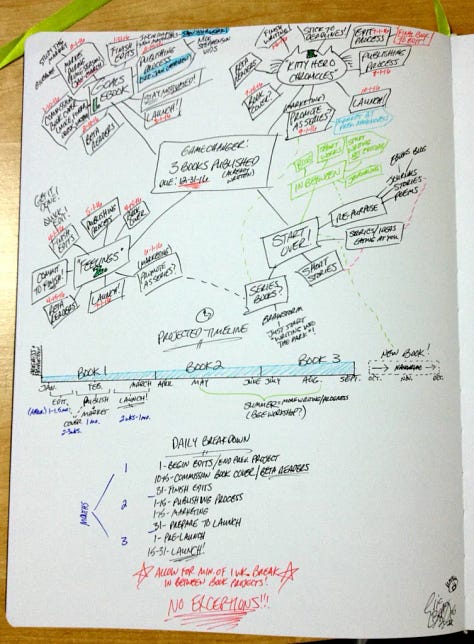
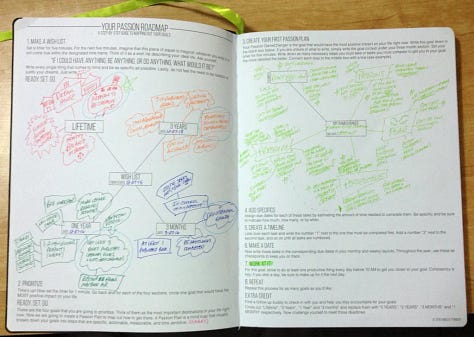
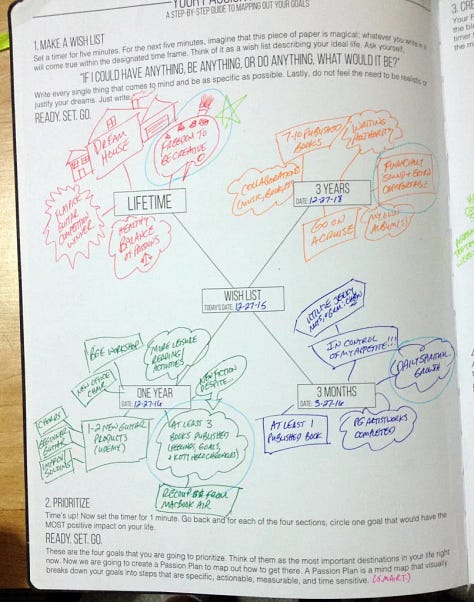
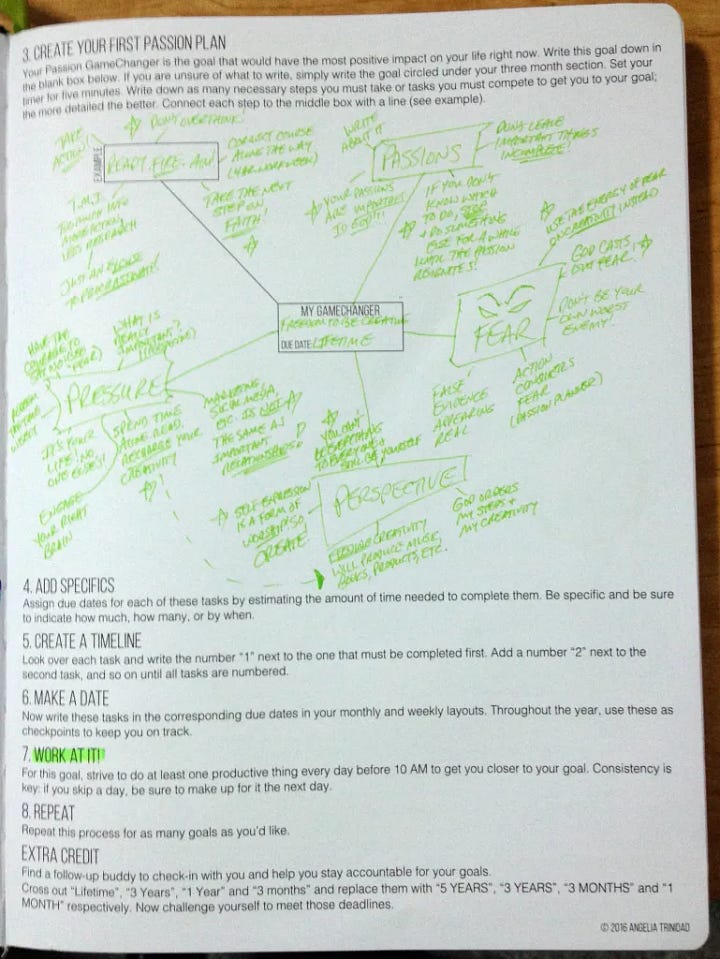
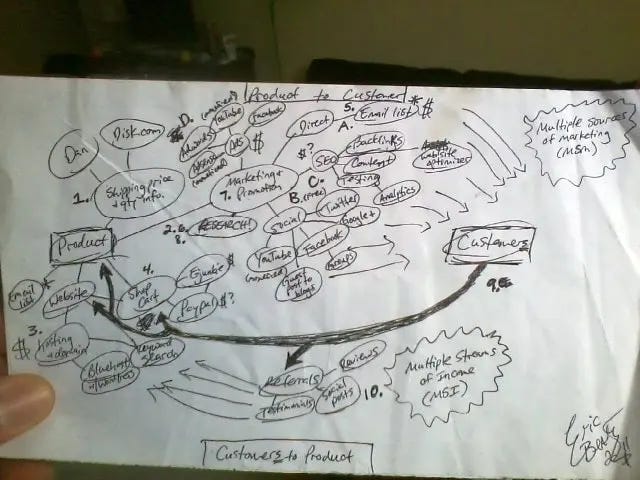
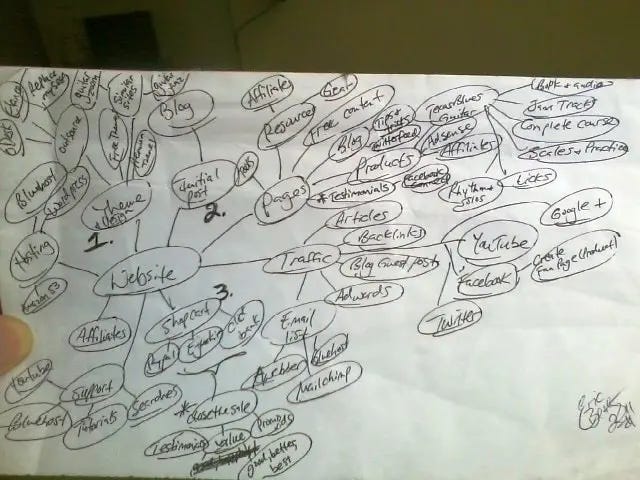
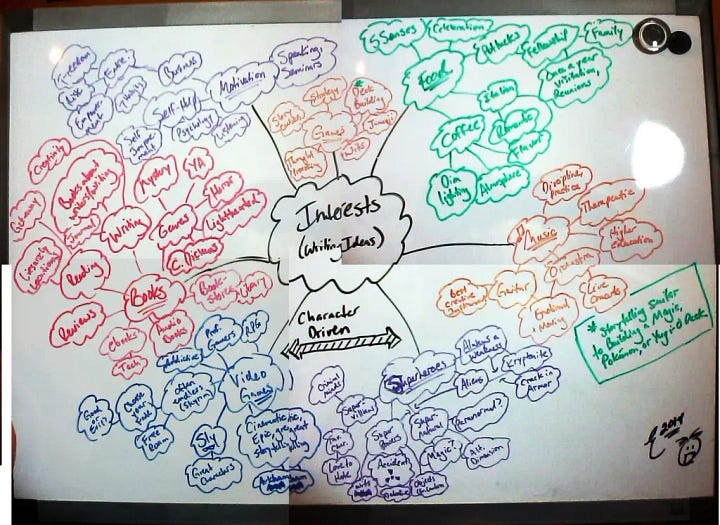
As you can see from some of the mind maps in my own collection—especially the first image, where I show my process for (hopefully) publishing three of my books by the end of the year—mind mapping is a great way to layout your ideas on the page so you can proceed forward in your goals and aspirations, using your mind map as a blueprint for your product creation, writing, etc.
How to Create a Mind Map in 3 Simple Steps
I know some of you are no doubt overwhelmed about the whole process of mind mapping, but honestly, it couldn't be easier. Sure, there are all sorts of ways to be flashy with your designs, and you may even be wondering "How can I create such great works of art? I can't even draw!"
Once again, your ideas—and that's all that mind mapping is, really, just writing down a collection of ideas—don't have to be works of art. Trust me, if you can draw a circle/oval and a line (straight or curved), then you can easily draw a mind map.
Your ideas don’t have to be works of art.
Below, I've listed 3 simple steps for creating a simple, yet effective, mind map. Remember, you can use this for any idea; it doesn't have to be limited to your profession, hobbies, or anything else. You can even use it as a grocery shopping list!
Start With Your Main Idea in the Center. Simply take your piece of paper (again, landscape orientation to allow for the most space) and write your Main (Central) Idea on the center of the page. Then, draw a circle around it. Let's say our central idea is for a novel. That's what we would write on the center of the page, "My Novel." Then we circle it.
Write Your Secondary Ideas. Now that we have our novel as the central idea, the next step in the process is to write our Secondary Ideas around the central hub of "My Novel." Then draw a circle around each one and connect them to the Central Idea with lines. Some examples of our Secondary Ideas could include...
Characters
Plot
Setting
Continue to Drill Down. As you probably guessed, the next—and final—step in this process is to continue on with this pattern, branching off from each of our Secondary Ideas until we exhaust our imaginations. You'd be amazed at how much you can come up with simply by starting with one central idea and branching off from there. This is a process known as "Drilling Down," a simple way of saying that we're taking our ideas to the next logical level. Here's what this would look like if we used “Characters,” one of our Secondary Ideas, as our example:
Characters
Protagonist's Name
Antagonist's Name
Minor character names (sidekicks, comedic relief, etc.)
Relatives, family trees, etc.
(As you can see, the list can get quite extensive.)
One of the best things about this process is that you're continuing to expand the other Secondary, Tertiary, etc., ideas as you go, not just focusing on one idea at a time. This is how you end up with massive mind maps like those seen above.
Mind Mapping Software Apps
A More Technical Approach
If you prefer to be more technically savvy, then perhaps mind mapping software is more up your alley. Here are four apps I recommend starting out with:
Scapple (My preferred mind-mapping software)
Created by the fine folks who made my favorite writing software of all time, Scapple is one of the most intuitive and easiest to comprehend mind mapping apps on the market today.
And for only $20.99, it's a steal of a deal for all you can do with it. I've created everything from simple to complex charts and maps since I began using Scapple just a few short months ago. I've even used it to plan the publication of the final two books in my SMART FOCUS series.
And just like Scrivener, Scapple comes with a better-than-standard 30-day Free Trial. What do I mean by better-than-standard? According to Scapple's site, their trial is for 30 days of actual use. This means if you use it every other day, you'll be able to use it for 60 actual days. In other words, the trial only counts down the days you actually use Scapple. Can't beat that with a stick!
XMind (My previously preferred mind-mapping software)
The mind-mapping app I've come to really enjoy is the sleek, easy-to-use XMind. Available in both free and pro versions, XMind implements a very user-friendly interface with a layout that gets out of your way and lets you roam around on the page with little to no interference.
I get all I need out of the free version of XMind (XMind 8), so I've never needed to upgrade; however, if you want a few more features you can check out their pricing page to see what's available in the subscription version, XMind Pro.
The Brain: The Ultimate Digital Memory
The Brain is a mind-mapping tool I've only recently discovered, so I haven't had time to test it myself; although, based on its features, I'd definitely recommend checking it out—at least the free version, to begin with.
With The Brain mind mapping software, you can easily organize your thoughts into a central digital "brain" that quickly arranges itself around whatever thoughts and ideas you focus on (see animated image above). It's more of an organic tool than XMind—if you're into that sort of thing—and is definitely more diverse than just sorting your ideas into random folders and documents on your computer.
You can even attach web links, images, and other files with The Brain's easy drag-and-drop interface. With The Brain, it's easy to see how all your ideas connect to form logical and efficient relationships—I guess you could say it puts a whole new meaning on the term brainstorming.
Check out their pricing page for information on the various levels of functionality. There's a free version of The Brain as well, which is good because their pricing is a bit steep if you ask me.1
MindMup (Mind mapping in the cloud)
Another great alternative is an online-based mind-mapping program called MindMup. Once again, they have both a free plan and a paid plan called MindMup Gold. Not only that, it's completely open source!
MindMup is possibly the most minimalistic design of the four mind-mapping programs I've listed here, but you may prefer it to the others since there's no need to install anything on your computer. Simply go to MindMup.com and it begins a new project for you.
MindMup allows you to save to the cloud (if you want to share your mind map publicly) or via Google Drive if you would rather keep your work private.
A word of caution, though: I tried this out during the presentation in the video below (on a PC laptop at the same time as I was using my MacBook Air) and found it didn't want to save properly. So before you get very deeply involved in a new project, I suggest trying out MindMup several times with some test projects to make sure it will save correctly.
Mind Mapping: From Page to Product
Taking Mind Mapping to the Next Level
Unfortunately, since the examples I showed at the writer's meeting weren't available as digital copies, I wasn't able to include them in the video below. However, I can give you an overall idea of how the last part of the presentation went.
Keep reading with a 7-day free trial
Subscribe to Gleaning Words to keep reading this post and get 7 days of free access to the full post archives.















